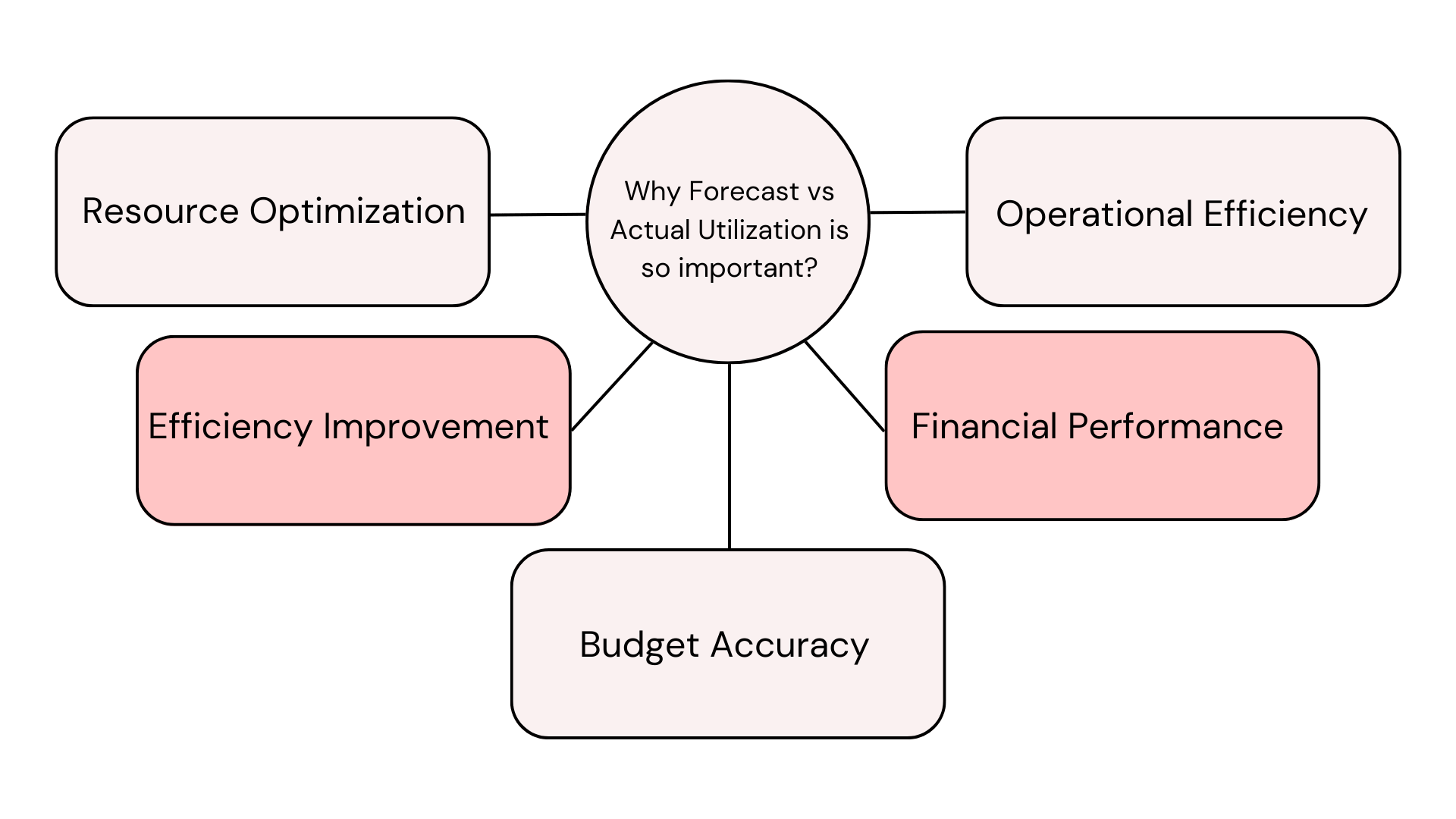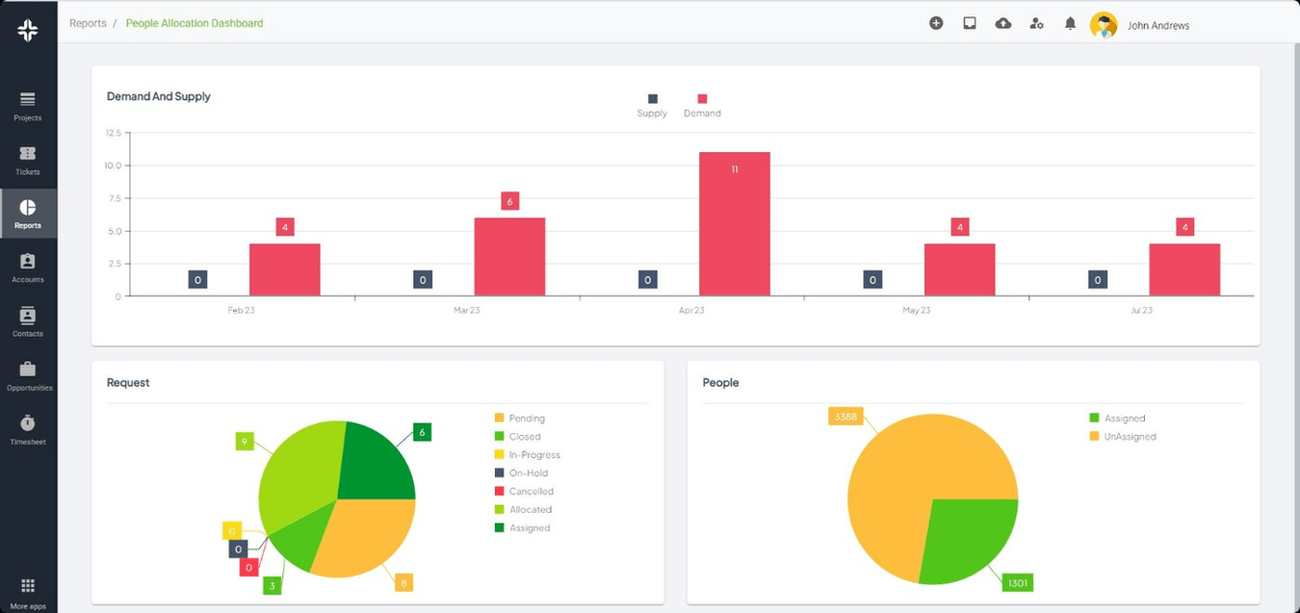Home » PSApedia
Forecast vs Actual Utilization
Discover the key differences between Forecast and Actual Utilization.

What Is Forecast vs Actual Utilization?
Forecast vs actual utilization is a comparison between the anticipated or projected utilization of resources and the real-world, observed utilization of those resources.
This comparison is commonly used in service-based businesses to assess how well resource allocation and planning align with the actual utilization of employees or teams.
Breakdown of forecast vs actual utilization
Forecast Utilization:
Forecast utilization refers to the predicted or expected utilization of resources, such as employees or teams, for a specific period in the future. It is an estimate based on various factors, including project schedules, client demand, and historical data.
Actual Utilization:
Actual utilization refers to the observed or real-world utilization of resources during a specific period. It reflects the actual allocation of resources and the tasks or projects they worked on.
Key aspects of Forecast vs Actual Utilization
Forecasting is a crucial planning tool that organizations use to make informed decisions about various aspects of their operations. It helps them anticipate and prepare for future resource needs, staffing requirements, and workload distribution for upcoming projects and periods.
By analyzing historical data, market trends, and other relevant factors, organizations can develop accurate forecasts that guide their decision-making processes.
Resource allocation is a key aspect of effective planning and management. Organizations need to ensure that they have the right resources in place to meet their objectives and deliver on their commitments.
Why Forecast vs Actual Utilization is so important?
It helps organizations ensure that their resources, including employees and teams, are optimally allocated. By identifying discrepancies between forecasted and actual utilization, businesses can adjust their resource allocation strategies to achieve better efficiency and productivity.
Accurate resource allocation and utilization directly impact cost management. A misalignment between forecasted and actual utilization can result in unnecessary labor costs or missed revenue opportunities.
Accurate forecasting of resource utilization helps in budget planning. A well-aligned forecast ensures that budgets accurately reflect the resources required for upcoming projects, reducing the risk of over- or under-allocating resources.

Why Forecast vs Actual Utilization is so important?
How to calculate Forecast vs Actual Utilization?
To perform this calculation, follow these steps:
Step 1: Determine Forecasted Utilization
Calculate the forecasted or projected utilization of resources for the specific period you’re evaluating. This can be done using historical data, project plans, client demand forecasts, and other relevant factors. Forecasted utilization is typically expressed as a percentage.
Step 2: Determine Actual Utilization
Gather data on the actual utilization of resources during the same specific period. This data should include the total number of hours worked by employees or teams on billable tasks or projects.
Step 3: Calculate the Difference
Calculate the difference between the forecasted utilization and the actual utilization. This can be done using the following formula:
Difference = Forecasted Utilization – Actual Utilization
A positive difference indicates that the forecasted utilization was higher than the actual utilization, while a negative difference indicates the opposite.
What Is the Difference Between Forecast and Actual Utilization?
The difference between forecast and actual utilization lies in their definitions, timing, and purposes:
| Forecast Utilization | Actual Utilization |
|---|---|
| Forecast utilization is forward-looking and is based on estimates and planning for upcoming periods, such as weeks, months, or quarters. | Actual utilization is retrospective and is based on data collected from what actually occurred during a specific period in the past. |
| The primary purpose of forecast utilization is to help organizations make informed decisions about resource allocation, staffing levels, and workload distribution for future projects and periods. | The primary purpose of actual utilization is to assess how effectively resources were allocated and utilized in practice. It serves for performance evaluation and provides insights into the accuracy of forecasts. |
| Forecast utilization is typically calculated based on factors like project schedules, client demand forecasts, historical data, and resource availability. It is often expressed as a percentage. | Actual utilization is calculated based on recorded data, such as the number of hours worked by employees or teams during a specific period. It provides an accurate representation of how resources were allocated and used. |
How Is Forecast vs Actual Utilization Used?
By comparing forecasted utilization with actual utilization, organizations can evaluate the accuracy of their resource forecasting. Discrepancies highlight areas where forecasts were too optimistic or conservative.
The comparison informs resource allocation adjustments. If actual utilization consistently falls short of forecasts, organizations can optimize resource allocation strategies to prevent overstaffing. Conversely, if actual utilization exceeds forecasts, they can ensure resources are not overextended.
Are You Ready to Improve Your Resource Utilization?
Resource utilization is a critical factor in the success of any organization, particularly in service-based industries where efficient allocation of resources can significantly impact productivity and profitability.
With KEBS, you have the ability to strategically manage and optimize the allocation of your workforce, equipment, and other valuable assets. This powerful tool allows you to effectively deploy your resources in a way that maximizes billable hours and minimizes waste.

KEBS Resource Management
Overall, KEBS is a comprehensive system that allows you to optimize the allocation of your workforce, equipment, and other assets.
Book a Demo Today!



